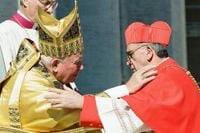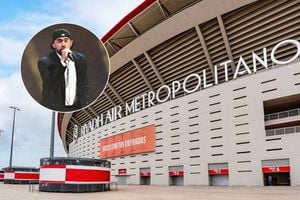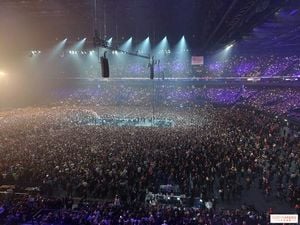The Roman Catholic Church is currently in the midst of a conclave to elect a new pope, following the death of Pope Francis on April 21, 2025. The first day of voting, held on May 7, 2025, resulted in black smoke emerging from the Sistine Chapel, indicating that the cardinals had not yet reached a consensus on a successor. Voting will continue today, May 8, with seven Brazilian cardinals participating, including Dom Sérgio da Rocha, the archbishop of Salvador, who is noted for his close relationship with the late Pope Francis.
This conclave has drawn attention not only for its immediate implications but also for its historical context. The last conclave that resulted in a significant moment for Brazil was in 1978, when Cardinal Aloísio Lorscheider, then archbishop of Fortaleza, was a prominent candidate for the papacy. Notably, he was the first to receive the two-thirds majority of votes necessary to become pope, yet he declined the position due to health issues. Frei Betto, a writer and theologian, shared insights into Lorscheider's decision, revealing that he had undergone eight bypass surgeries and felt that the Church could not afford to call another conclave shortly after the unexpected death of Pope John Paul I, who served only 33 days.
Frei Betto recounted the atmosphere during the 1978 conclave, which took place under the shadow of the recent death of John Paul I. The sudden loss had left the Church reeling, and the cardinals were acutely aware of the potential burden of electing another pope so soon. Lorscheider's decision to step back was seen as a selfless act, prioritizing the Church's stability over personal ambition.
The conclave that ultimately elected John Paul II on October 16, 1978, was marked by intense deliberation, requiring eight rounds of voting before a consensus was reached. Karol Wojtyła, who became John Paul II, was 58 years old at the time and would go on to serve for an impressive 26 years, until his death in 2005. Interestingly, Lorscheider lived longer than John Paul II, passing away in 2007.
The process of choosing a papal name adds another layer of intrigue to the conclave. Traditionally, popes select names that honor their predecessors or saints they admire. Pope Francis, for instance, broke from this tradition by choosing the name Francisco, inspired by Saint Francis of Assisi, known for his humility and dedication to the poor. This choice was significant as it marked the first time a pope adopted that name.
In contrast, Pope Benedict XVI chose his name in honor of Pope Benedict XV, who was known as a peacemaker during World War I, as well as Saint Benedict of Nursia. John Paul II chose his name to honor his immediate predecessor, John Paul I, who had a very brief papacy. John Paul I, in turn, selected his name to pay homage to both John XXIII and Paul VI, creating a lineage of respect and continuity.
Interestingly, there exists an unwritten rule that prohibits popes from adopting the name 'Pedro' out of respect for Saint Peter, the first pope. For the first 500 years of papal history, popes did not change their names, maintaining their birth names. This changed with Pope John II in 533, who changed his name from Mercury, a name he felt was inappropriate for a pope. The last pope to retain his birth name was Pope Marcellus II in 1555.
As the current conclave progresses, the world watches closely. With the election of a new pope, there are expectations of continuity and change within the Church. The cardinals are tasked not only with selecting a leader but also with addressing the myriad challenges facing the Catholic Church today, from declining attendance to the need for reform.
The conclave's outcome will undoubtedly shape the future of the Church, and the decisions made in the coming days will resonate for years to come. As the cardinals gather in prayer and deliberation, the faithful await the white smoke that will signal the election of a new pontiff, hoping for a leader who can guide the Church through these turbulent times.




